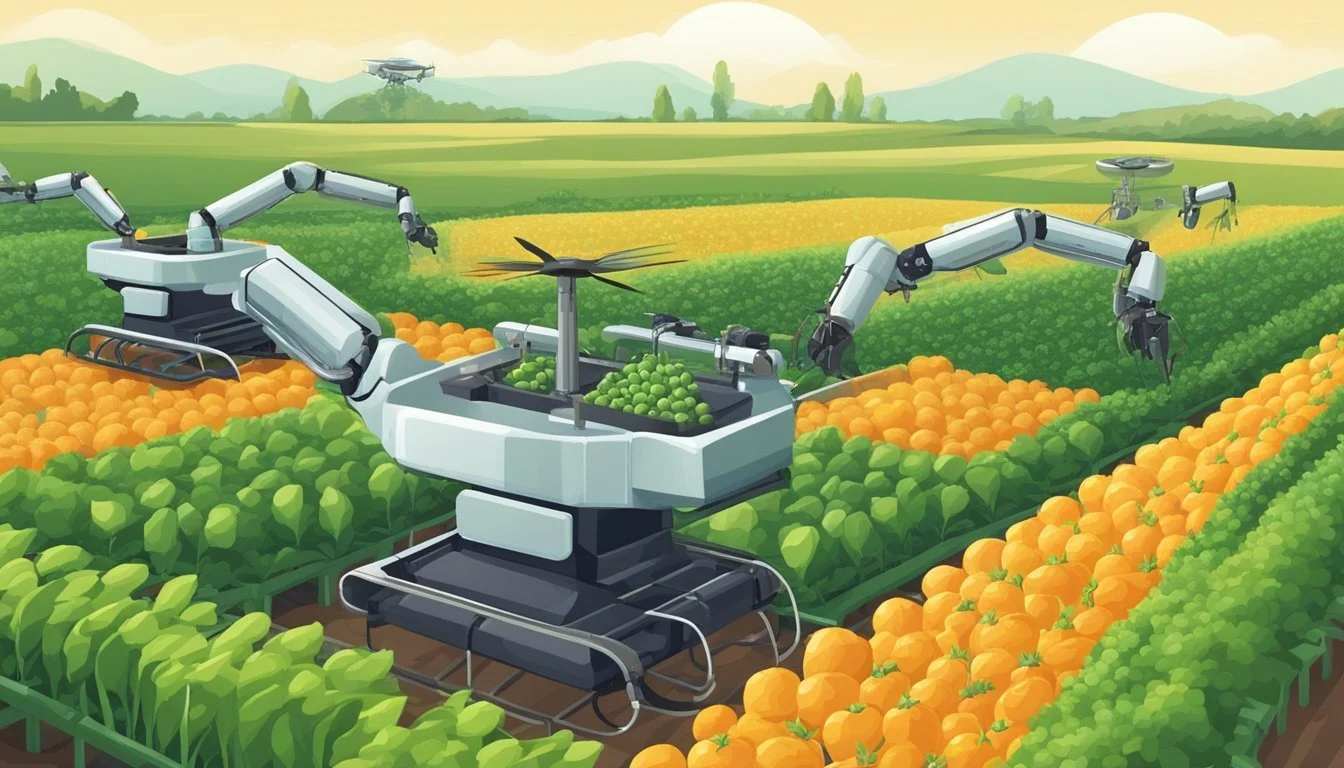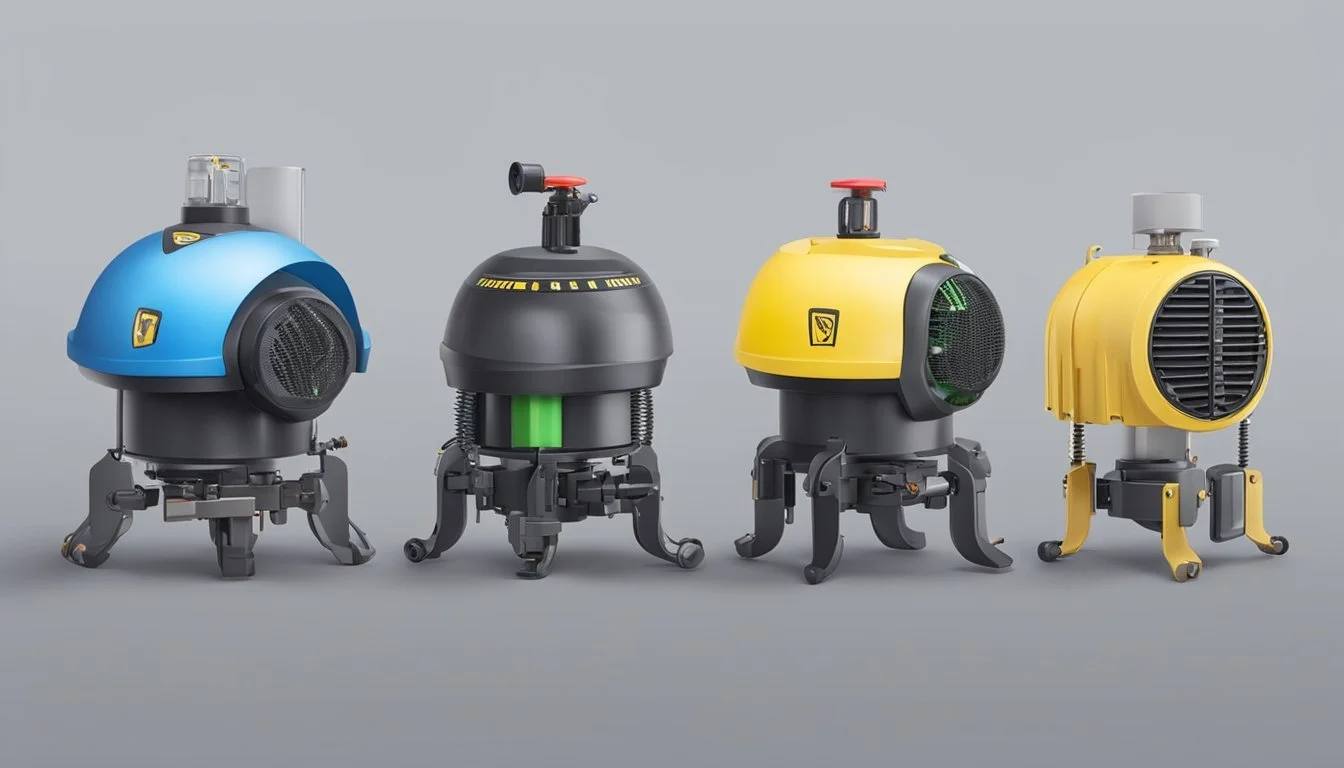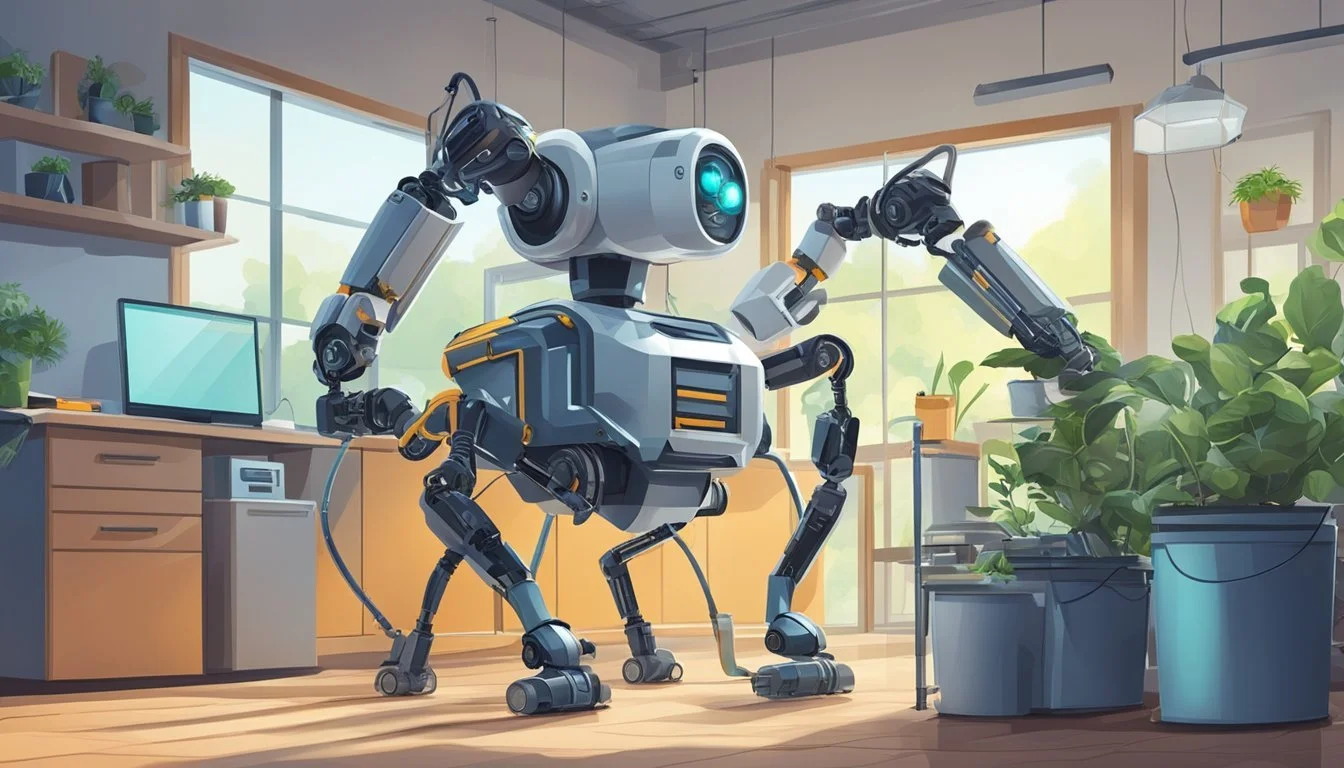Mechanical Pest Control
Innovative Strategies for Sustainable Agriculture
Mechanical pest control is a method of managing and eliminating pests using physical means. This approach to pest management often includes the use of barriers, traps, and manual removal techniques to protect crops, homes, and businesses from the damage caused by unwanted insects and animals. Unlike chemical methods, mechanical pest control does not rely on pesticides, offering a more environmentally friendly option that reduces the risk of chemical exposure to humans, pets, and non-target species.
This form of pest control is not only used in agricultural settings but is also effective in urban environments where the deployment of chemicals is less desirable. Mechanical methods can be simple, like the use of screens and fences to prevent pest access, or more complex, such as the employment of electronic devices that deter pests. Pest management strategies that involve mechanical means are particularly valuable when immediate reduction of a large number of pests is necessary or as part of an integrated pest management (IPM) plan that may also include biological and cultural control tactics.
Types of Pests
In the realm of mechanical pest control, it is crucial to identify which types of pests are afflicting an area. The techniques for mitigation can vary greatly depending on the specific pest involved. Below is a detailed categorization of common pests that often require mechanical control methods.
Insects and Mites
Insects such as ants, cockroaches, and aphids are prevalent pests in homes and gardens. For instance, ants can be deterred through physical barriers and meticulous cleanliness. Cockroaches, which pose health risks by spreading bacteria, may require traps and sealed entry points to prevent infestation. Aphids, sap-sucking pests that harm plants, can be controlled with water sprays or sticky traps.
Bed Bugs: Heat treatment is often employed as these pests cannot survive temperatures above 45°C (113°F) when sustained for 90 minutes.
Mites and Ticks: Small arachnids that can affect both plants and animals, often managed with environmental modifications, such as removing foliage or debris where they thrive.
Beetles and Weevils: Some species are sensitive to temperature, with weevils being killed after exposure to temperatures below -18°C (-0.4°F) for four days.
Rodents and Mammals
Rodents include mice and rats, which are notorious for spreading diseases and causing property damage. They can be mechanically controlled using traps and exclusion techniques such as sealing entry points to buildings. Other mammals, such as raccoons, can be managed by secure waste containment and habitat modification to discourage foraging.
Nematodes: While not a mammal, certain beneficial nematodes can be introduced to control rodent populations by targeting their food sources.
Snails: Although not rodents, they are grouped here due to similar control methods such as traps and physical barriers.
Birds and Other Wildlife
Birds can become pests when they nest in undesirable locations or damage crops. Various mechanical methods like netting, spikes, and auditory deterrents are used to repel or exclude birds from specific areas. Wildlife such as deer or rabbits, which may also enter gardens or other cultivated spaces, can be discouraged through the use of fencing and habitat modification. It is important to approach wildlife control with a level of sensitivity to maintain ecological balance while protecting property and resources.
Mechanical Control Strategies
Effective mechanical control in pest management involves a variety of tactics that can prevent and mitigate pest issues without the use of chemicals. These methods are diverse, ranging from trapping and exclusion to the use of barriers designed to keep pests out.
Exclusion Techniques
Exclusion methods are preventive measures designed to keep pests from entering an area. Mesh screens are commonly installed on windows and vents to prevent insects like flies and mosquitoes from entering buildings. Similarly, gaps and cracks can be sealed with materials such as steel wool or caulk to deny entry to rodents and other pests. Proper exclusion is crucial in establishing a first line of defense against pests.
Trapping and Removal
Traps are essential tools for capturing and removing unwanted pests. There are several types of mechanical traps including snap traps for rodents and pheromone traps that attract and capture specific insect species. Sticky traps are also widely used because they can efficiently catch a variety of insects, such as cockroaches and spiders, without the use of toxins. Regular monitoring and replacement of traps are necessary for sustained effectiveness in pest removal.
Physical Barriers
Physical barriers provide a strong defense against pest intrusion. For example, a fence can deter larger wildlife or domestic animals from entering gardens and potentially damaging plants. Certain types of barriers can also protect against mollusks; copper strips, for instance, are effective at preventing slug entry into specific areas. Additionally, implementing row covers in agriculture can shield crops from various insects while still allowing sunlight and water to penetrate. The physical barrier tactic is a cornerstone in the pursuit of pest prevention and control.
Component of IPM
Integrated Pest Management (IPM) is a strategic approach to pest control that minimizes risks to both the environment and human health. It encompasses a range of techniques and practices designed to suppress pest populations at acceptable levels while using the least harmful methods.
Monitoring and Risk Assessment
Monitoring is a foundational element in IPM, involving regular inspection and identification of pest populations within a given environment. This data-driven process is essential for making informed decisions related to pest management. Accurate monitoring enables the assessment of risk levels and helps in determining the necessity and timing of control measures.
Key Steps in Monitoring:
Identification of pests and beneficial organisms.
Assessment of pest damage and population dynamics.
Documentation of environmental conditions affecting pest and natural enemy populations.
Risk assessment in IPM is based on the understanding that intervention is only justified when pest populations reach a level that could lead to economic loss or health hazards. This involves setting action thresholds and forecasting potential pest outbreaks.
Parameters for Risk Assessment:
Action thresholds for pest intervention.
Environmental factors influencing pest proliferation.
Integration with Other Control Methods
IPM is not reliant on a single method but integrates biological, chemical, and cultural practices to manage pests effectively. This cohesive strategy emphasizes the use of non-chemical methods wherever possible to mitigate the environmental impact.
Biological Control: Utilizes natural enemies of pests, like predators, parasites, or pathogens, to regulate pest populations.
Chemical Control: Employs pesticides as a targeted solution when necessary, ensuring they are applied in a manner that limits environmental harm.
Cultural Practices: Includes crop rotation, habitat manipulation, and resistant varieties to create less favorable conditions for pests.
By integrating these methods, IPM promotes sustainable and environmentally responsible pest management, reducing reliance on potentially harmful chemical interventions.
Implementation in Various Settings
Mechanical pest control employs physical methods to reduce or eliminate pests, aligning with both eco-friendly practices and sustainable management. It supports the ecosystem by preferring non-chemical means. Below are specific ways mechanical pest control is utilized in different settings.
Home and Garden Pest Management
In the realm of home and garden, mechanical pest control strategies are popular for their simplicity and environmental benefits. Gardeners often use barriers, such as fences or nets, to protect vegetables and other plants from pests. Additionally, manual removal of insects or infested plants helps maintain a healthy garden ecosystem without resorting to harmful chemicals.
Handpicking pests, using water sprays to dislodge them, and introducing natural predators such as ladybugs establish a sustainable environment. Cultural controls, like crop rotation and proper waste management, effectively reduce pest populations by disrupting their life cycles.
Agriculture and Commercial Sectors
For the agriculture and commercial sectors, physical pest control methods can include larger scale applications, such as mechanical tillers disrupting soil to destroy insect habitat, or UV light traps that attract and kill flying insects. These are part of an integrated approach to pest management that supports an environmentally friendly approach.
Biological pest control, involving the introduction of specific natural predators and pathogens, is another tactic in commercial settings. It works in tandem with physical controls, leading to a strategic pest management system focusing on long-term pest suppression that fosters a healthier ecosystem.
Safety and Environmental Considerations
In discussing the safety and environmental considerations of mechanical pest control, it is essential to address how these methods influence effectiveness, non-target organisms, and comply with regulatory standards. Mechanical controls are tools or practices that physically remove or exclude pests, thus offering an alternative to chemical means.
Efficacy and Effectiveness
Mechanical pest control strategies must be effective to justify their use. They often work best as a component of an Integrated Pest Management (IPM) program, which combines physical, biological, and sometimes chemical measures to control pests. Techniques such as heat treatments are proven to eradicate certain pests; for instance, bed bugs are eliminated at temperatures above 45°C for 90 minutes. However, their effectiveness can be influenced by factors like level of infestation and habitat manipulation.
Impact on Non-Target Organisms
One significant advantage of mechanical controls is their minimal impact on non-target organisms, contributing to their environmentally sensitive nature. When using these methods, it's critical to ensure that beneficial species, like natural enemies of pests, are preserved. For example, traps or barriers can selectively target specific pests while conserving a habitat's ecological integrity.
Regulatory and Health Issues
Adherence to regulations and concerns for human health are paramount. The Environmental Protection Agency (EPA) provides guidelines to ensure safety in pest management practices. Mechanical methods, such as using resistant varieties of plants or temperature control, greatly reduce the need for chemical pesticides, consequently mitigating health risks and adhering to stringent regulatory standards. As these strategies do not introduce potentially harmful substances into the environment, they are considered safe for use in sensitive areas, like schools and hospitals, and contribute positively to the overall human health and environment.
Advancements and Innovations
Recent years have seen significant advancements in the field of mechanical pest control. These innovations offer more efficient and environmentally friendly methods of mitigating pest damage.
Biological and Mechanical Controls: Integration of biological controls with mechanical methods has led to a more sustainable approach. For example, combining natural predators with mechanical traps targets specific pests without harming non-target living organisms.
Chemical-Free Solutions: Innovations in mechanical controls now emphasize chemical-free solutions. Rentokil discusses how the future of pest control leans toward sustainable technologies which avoid harmful chemicals, hence reducing environmental impact.
Physical Controls: In line with Integrated Pest Control (IPC), new mechanical devices effectively manage pests by creating inhospitable environments, such as extreme heat or cold. Backyard Focus highlights techniques like temperature-based methods that use heat to exterminate bed bugs, demonstrating a move towards non-toxic approaches.
Temperature Thresholds:
Bed Bugs: Above 45°C for 90 minutes
Weevils: Below -18°C for four days
Cockroaches: Above 48°C for an unspecified period
Innovation in Detection: Tools utilizing artificial intelligence have been introduced, allowing for smarter pest detection. For instance, Rentokil's intelligent rodent surveillance system employs machine learning for more accurate identification of rodent activity.
Target Pests: Innovations are designed with specific target pests in mind, ensuring that mechanical methods address the most pressing threats in a given area, while minimizing destruction to the surrounding ecosystem and avoiding undue harm to beneficial organisms.
With these advancements, the industry is moving towards a holistic and nuanced approach to pest control that capitalizes on the synergy between mechanical means and other pest management strategies.
Frequently Asked Questions
Mechanical pest control involves physical methods to prevent and eliminate pest infestations. These questions address common practices, advantages, and considerations in mechanical pest control.
What are some common mechanical pest control techniques?
Common techniques include the use of barriers, such as fences and screens, traps, like snap or glue traps for rodents and insects, and manual removal methods, which can be as simple as handpicking pests off plants.
How does mechanical pest control integrate with IPM strategies?
Mechanical pest control is a crucial component of Integrated Pest Management (IPM) strategies. It provides a non-chemical approach that can be combined with biological controls and chemical methods, when necessary, to manage pest populations effectively.
What are the benefits of using mechanical methods over chemical methods for pest control?
Mechanical methods are generally safer for humans and non-target species, as they do not involve toxic substances. They can provide a more sustainable and long-term solution to pest problems without the risk of creating chemically resistant pest populations.
Can mechanical pest control be ineffective under certain conditions?
Under certain conditions, such as large infestations or in cases where pests have adapted to mechanical controls, these methods can be less effective. Regular monitoring and adaptation of techniques are required for continued effectiveness.
How does mechanical pest control impact the environment compared to other methods?
Mechanical pest control has a minimal environmental impact. It avoids the potential for chemical run-off into water supplies and soil, preserving beneficial organisms and the overall health of the ecosystem.
What considerations should be taken into account when implementing mechanical pest control?
One must consider the species of pest, the size of the infestation, and the specific environment when implementing mechanical pest control. It's also important to evaluate the practicality and cost-effectiveness of the methods for the situation at hand.







